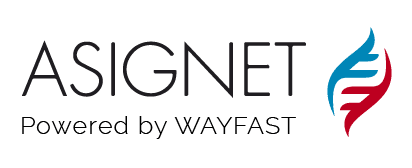The TEM solutions (Telecom Expense Management) industry has been one of the most fervent adopters of IT over the last 20 years, managing the rhythm of technological disruption to ensure better customer connection. As robotics, machine learning, and artificial intelligence (AI) begin to fundamentally transform the way companies provide their services in an on-demand economy. Telcos needs to revisit some of its long-held operating values.
With innovative technology, new telcos are implementing Robotic Process Automation (RPA), and they need to evaluate their existing IT infrastructure and application systems because of their business priorities.
Advanced technologies such as automation, computing, and AI helps wireless carriers effectively transform their core operations, and realize business outcomes faster for a higher return on investment (ROI).
From an operational standpoint, this would translate into telcos’ manual, expensive, and time-consuming processes that are replaced by automated software solutions that are more reliable and agile.
TEM solutions help you focus on your organization’s network infrastructure provided by telecom carriers and hardware providers during your lifecycle with them. This solution includes procuring new services, managing inventory, invoice billing, support, and maintenance.
This system also gives everyone, from Procurement, IT Network Managers, Finance teams, Auditing professions, to IT Leaders, a better way to manage the internal and external interactions and relationships driving integrated processes and relationships to lead you to success.
A great TEM tool helps you manage and keep a record of all move add changes and disconnect requests and provides a centralized repository of your inventory and contractual elements which are used for validating supplier invoices — this information in one central, accessible location available to anyone at your company who might need it.
With visibility and easy access to data, it’s comfortable to collaborate and increase productivity. TEM can help companies of all sizes drive business growth, and it can be especially beneficial to a small business, where teams often need to find ways to do more with less.
Everyone in your company can see your vital network information, understand your cost and effectively communicated with, what they’ve bought, when they last purchased, what they paid, and so much more.
How telecom carriers get benefits by using TEM solutions based on RPA?
A TEM solutions system based on RPA can give you a clear overview of your entire network spend, suppliers, and network performance in one place. This information also can tell you your outstanding carrier order statuses, any open network outages and the services which are coming due for renewal in the next 30 – 60 days out and much more.
The Finance team can validate your supplier invoices to ensure your network inventory cost and agreed contract rates are what you’re paying. Sourcing and procurement teams can use a TEM solution to understand in the best way the pipeline of contract renewals, benchmark your network costs and manage RFP’s.
Some of the most significant gains in productivity can come from moving beyond TEM as an invoice validation tool, and embedding it in your business to assist IT network management teams through supply chain management.
A TEM platform lets you manage a pricing inquiry across internal and external channels with your carriers, without losing track and gives your project teams and carriers a single platform to communicate across.
The potential benefits RPA can deliver in the IT infrastructure are significant because it can facilitate cost reduction in the range of 35% to 65% for onshore process operations, and up to 30% for offshore delivery. Through faster, efficient execution of manual, rules-based tasks, these software robots can drive noteworthy reductions in cycle times across different areas of operations.
Without a common platform for carrier interactions, communications can be missed or lost in the plethora of information leading to slow or unsatisfactory response times. The provisioning of new services thigh to contracts or de-provisioning of current customers using RPA in an automated schedule assures that we free up the capacity to be sold on other customers.
Even if you do successfully collect all this data, you handle the challenge of making sense of it. It can be difficult to extract intelligence. Reports can be hard to create, and they can waste valuable time.
IT Leaders and Managers can lose sight of what their teams are up to, which means that they can’t offer the right support at the right time, while a lack of oversight can also result in a lack of accountability from the team.
Example of a common task to be automated with RPA
Desired State Configuration (DSC) utilizing PowerShell a server provisioning and configuration management technology, allows an administrator to define common settings in a configuration script, which is then applied as many times as needed, whether once or thousands of times, to the same end.
There are dozens of PowerShell DSC resources to help build a DSC configuration and expose properties that the administrator can configure through RPA.
Practical application
Building a web server is a common task for administrators, and Internet Information Services (IIS) is the typical web server used by many organizations to host websites. Here’s how to apply the DSC / PowerShell automation technology to this common IT problem — building an IIS web server multiple times through a workflow and RPA — that will save an organization time and money.
Through the Asignet patented robot / our robot includes a new PowerShell class to run PowerShell automation scripts.
Our Robot enables the user through a Wayfast created workflow to use PowerShell and DSC to install IIS. This will allow IT departments to automate and complete repetitive tasks, saving time, money and reducing errors.
Server provisioning is a perfect candidate for automation because of the golden image, with the software and configuration settings for that server, remains the same at each new deployment.
This same Robot automation holds true in the provisioning Salesforce licenses, office 365 licenses, iPhone’s or SIP trunks, etc. Our Robot combined with workflow creation, HR / active directory integration, and the expert worker creates the true bridge to TEM/WEM/ITAM.
Contact us for more information about our Telecom Expense Management solution.






